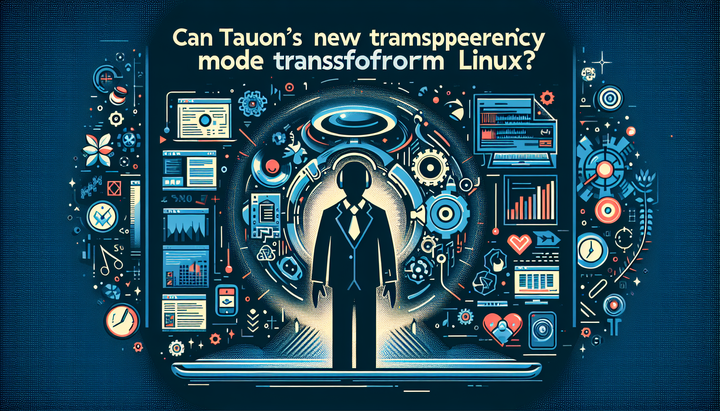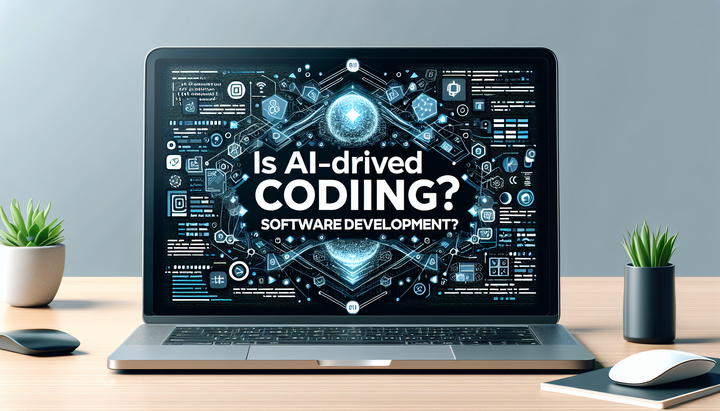Will Intel’s New Vision Redefine Tech Innovation?

Introduction: A New Era in Tech Innovation
Intel, one of the leading names in semiconductor and computing innovation, is now at the crossroads of transformation and reinvention. With its newly minted CEO, Lip-Bu Tan, and a strategic focus on spinning off non-core businesses, Intel is setting the stage for major shifts in the technology sector. This article dives deep into the implications of Intel's bold new vision and what it means for software development, AI-driven coding, and emerging programming trends.
Emerging Tech Trends and the Role of AI in Software Development
The tech industry is experiencing a profound transformation driven by the integration of artificial intelligence into every facet of computing. Software development is no longer just about writing lines of code; it’s about leveraging next-generation tools to deploy smarter, more efficient solutions. Key trends include:
- AI-Driven Coding Assistants: Tools that can suggest code, debug errors, and optimize performance in real time.
- Automated Testing and Deployment: Streamlining the development process through CI/CD pipelines.
- Low-Code/No-Code Platforms: Enabling non-developers to contribute to digital solutions.
- Cloud-Native Development: Emphasizing containerization, microservices, and scalability.
These innovations not only enhance productivity but also pave the way for a dynamic, evolving landscape in programming and software development.
Intel’s New Corporate Vision: Implications for Developers
At its recent Vision event, Intel’s leadership hinted at a major overhaul of its business portfolio. Rather than expanding temporarily outdated or non-core components, the emphasis now is on spinning off entities that do not contribute to the central mission. This move has the potential to:
- Improve Focus: Consolidating resources into key areas such as AI, advanced processors, and next-generation compute solutions.
- Accelerate Innovation: Allowing teams to redirect efforts to emerging tech trends and modern software development practices.
- Enhance Market Competitiveness: Positioning Intel to better compete with rivals by investing in cutting-edge architecture and ecosystem partnerships.
For developers and tech professionals, these changes will likely translate into more robust platforms and a tighter integration of hardware and software, driving further advancements in AI coding and digital transformation.
AI in Coding and the Evolution of Next-Generation Processors
One of the most exciting prospects lies in Intel’s commitment to integrating AI at every level of their product portfolio. The new roadmap includes processors that are designed with AI capabilities in mind, such as:
- Advanced Matrix Extensions (AMX): Machine learning accelerators that are embedded in the CPUs to boost AI operations.
- Neural Processing Units (NPUs): Specialized hardware that supports complex neural network computations, enabling faster and more efficient AI solutions.
- Risk Production Phase: An innovative approach to mass production, emphasizing practical testing and validation of AI-driven architectures.
This integration points to a future where AI is not just an add-on feature but a core component of computing. Software developers can expect tighter hardware-software synergy, opening up new avenues for application performance optimization and functionality enhancement.
The Rise of Low-Code and No-Code Innovations
Another key trend that is transforming software development is the integration of low-code and no-code platforms. These technologies simplify app creation and empower a broader range of users to participate in digital innovation. Intel’s strategic realignment could accelerate the following developments:
- Streamlined Development Processes: Developers can focus on more complex problems, leaving routine coding tasks to automated systems.
- Faster Time-to-Market: Businesses can deploy solutions rapidly by leveraging pre-built modules of code and robust framework integrations.
- Enhanced Collaboration: These platforms democratize development by bridging the gap between professional developers and business stakeholders.
By investing in high-performance processors that support these platforms, Intel is setting the stage for a revolution in how software is developed, tested, and deployed globally.
Intel’s Strategic Spin-Offs: What Do They Mean for the Future?
CEO Lip-Bu Tan’s recent remarks about spinning off non-core business units have sent ripples through the tech community. Such decisions are not merely about cutting costs but about focusing efforts on innovations that promise substantial returns. The following points summarize the potential benefits:
- Increased Agility: By divesting from areas that do not directly contribute to the company’s future vision, Intel can pivot faster in response to market trends.
- Investment in Core Technologies: Resources can be reallocated to developing processors, AI capabilities, and integrated systems that are designed to support evolving software development paradigms.
- Collaboration with Ecosystem Partners: With a streamlined focus, Intel is likely to foster deeper partnerships with software giants, cloud service providers, and AI innovators.
For developers and tech leaders, these changes come as an opportunity to engage with more specialized hardware and software solutions that are tailored to the demands of modern applications.
Addressing Developer Challenges in a Rapidly Evolving Landscape
As exciting as the future may look, the transition is not devoid of challenges. Developers must navigate a complex mix of legacy systems and emerging technologies. Some of the primary challenges include:
- Learning Curve: New technologies, languages, and frameworks require time and effort to master.
- Integration Issues: Merging legacy systems with next-generation technologies can be challenging, particularly in large-scale organizations.
- Resource Management: Balancing investments in innovation while maintaining operational stability is a key management challenge.
- Security Concerns: Advanced processors and AI integration call for sophisticated security measures to safeguard data and ensure compliance.
However, industry experts believe that these challenges can be mitigated through targeted training, proactive infrastructure upgrades, and enhanced collaboration between hardware and software teams.
Expert Insights: The Future of AI-Driven Software Development
Leading voices in the technology and programming communities are excited about Intel’s new strategic direction. Experts suggest that the next few years will see:
- An increased focus on AI programming, as integrated hardware accelerators enable more efficient and powerful applications.
- The development of new frameworks that blend traditional coding with AI-driven solutions, providing developers with innovative tools to solve complex problems.
- A surge in investments toward low-code and no-code platforms, making software development accessible to non-experts and nurturing innovation across industries.
Industry reports imply that these changes will drive an era where software development is seamlessly integrated with hardware performance, enabling powerful and efficient computing solutions that power everything from consumer gadgets to enterprise systems.
How Intel’s Transformation Aligns with Global Trends
Intel’s shift in focus coincides with a broader global trend towards smarter, more efficient computing systems. Several global factors reinforce this move:
- Acceleration of Digital Transformation: Companies worldwide are embracing digital initiatives, pushing the demand for reliable and intelligent hardware.
- Rising Adoption of AI and Machine Learning: As businesses lean into data-driven strategies, the need for AI-enabled hardware becomes increasingly critical.
- Growth of Edge Computing: With the rise of IoT devices and decentralized networks, optimized hardware solutions play a key role in enabling fast, local data processing.
These trends suggest that Intel’s strategic redirection could set new benchmarks for innovation and create opportunities for developers to work on cutting-edge projects that drive global digital transformation.
Conclusion: Navigating the Future of Tech Innovation
Intel's new vision, centered around focusing on core competencies and divesting from non-essential units, is more than just a business strategy—it’s a call to action for the entire tech industry. With an increased focus on AI coding, advanced processors, and revolutionary low-code/no-code platforms, the stage is set for a dynamic era in software development.
For developers, tech enthusiasts, and industry leaders alike, staying ahead means embracing these changes and adapting to innovative methodologies that promise to redefine the future of technology. As Intel pushes forward with its transformation, its actions will likely influence not only hardware and processor markets but also the broader realm of digital innovation. Whether you’re programming artificial intelligence, designing next-generation applications, or simply following tech trends, the journey ahead is packed with opportunities and challenges that signal a paradigm shift in how technology is built and experienced.
In summary, Intel’s reshaping of its business portfolio underscores a clear message: innovation is not optional—it's imperative. Developers must leverage these changes by upskilling in emerging programming languages, familiarizing themselves with new frameworks, and exploring the growing world of AI-driven software development. Only by embracing this transformative era can they truly prepare for the future of tech innovation.
Stay tuned as Intel continues to update the market with new breakthroughs. The ripple effects of these shifts will no doubt create waves across industries, urging professionals to harness the synergy of hardware and software in unprecedented ways.



Comments ()